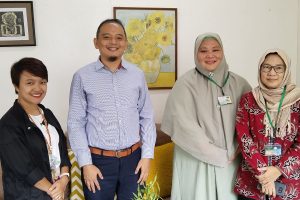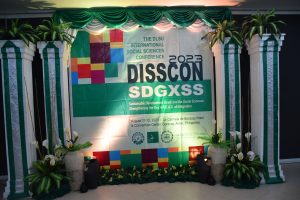The Pandemic and the Folly of Human Exceptionalism: Learning the Hard Way
 He opened his presentation with the image of that ostrich sprinting comically down a residential street. But the situations that followed served to demonstrate how human behavior was often more absurd.
He opened his presentation with the image of that ostrich sprinting comically down a residential street. But the situations that followed served to demonstrate how human behavior was often more absurd.
The opening event in the 42nd Conference of UGAT—the Ugnayan Pang-Aghamtao or Anthropological Association of the Philippines—was held on November 16 with UP-Diliman Senior Lecturer and Philippine Daily Inquirer columnist Dr. Gideon Lasco as webinar presenter. Speaking on “COVID-19 in the Philippines: A Multi-Species Perspective” via Zoom, his talk stemmed from the need for an ecological view of the world as people engage with non-human companions during mandatory quarantine. Conducted in regional conferences for Luzon (co-hosted by �������ϲ�-Social Development Research Center and the Ateneo de Manila University Department of Sociology and Anthropology), the Visayas (hosted by University of San Carlos) and Mindanao (Ateneo de Davao University), the two-week program has as its theme “Anthropology of Encounters.”
Sharing that his work in environmental research and advocacy was inspired by his formative years at the College of Forestry in the University of the Philippines-Los Baños, Dr. Lasco recognized early on how human beings are “enmeshed, entangled, and imprecated in networks with nonhuman actors and agents.” The pandemic, he pointed out, and the growing awareness that people live with other beings that include animals, plants, and— most significantly—microbes, has led to a turn toward multi-species perspectives, and away from the concept of the Anthropocene or the predominance of human influence. He saw the ostrich that famously appeared on Twitter in August of this year as a metaphor in going viral, for like COVID-19, it has affected all of us.
Among the insights he imparted from his work in the field was that the wealth of Philippine ethnography, as well as its folklore and cultural history, indicate how “local notions of ecology have always seen the world animated by more than human actors.” It is the “disregard for nature and the disrespect for animals,” as lamented by primatologist Jane Goodall, that has given rise to the pandemic. The chaos brought about by the coronavirus is the latest among the consequences resulting from what feminist cyborg scholar Donna Haraway calls the “foolishness of human exceptionalism,” which has accounted for habitat destruction, the illegal wildlife trade and industrial farming, not to mention the traffic snarls caused by plant lovers who hoard exotic greenery. Dr. Lasco stressed that through a multi-species perspective, it becomes clear how the structural violence that has been wrought not only “exposes humans to harmful species, but exposes other species to human harm.” Such violence is evident in the mass graves of minks in Denmark, extinguished to satisfy the demand for false eyelashes and leather goods.
From the examples and lessons gained from his investigations, he emphasized the need to act on their implications for “our more-than-human togetherness.” He saw that future work would require addressing the question of how humans and non-humans can live together in precarious times. Most importantly, in “returning to anthropology’s core mission,” he cited the need to find ways to “deepen our understanding of what it means to be human in a more-than-human world.” He looked forward to working with participants and colleagues toward “re-training our lenses to non-humans,” and encouraged people to continue to do research through the pandemic—a “watershed moment for humanity.”





